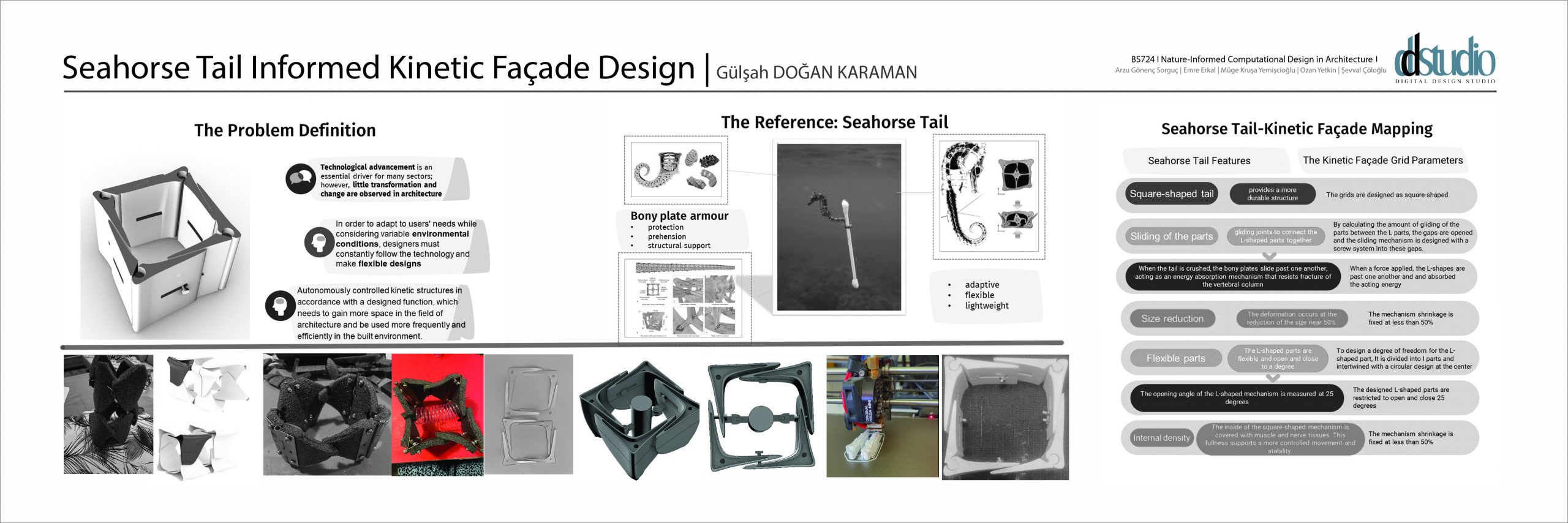Gülşah Doğan
2022 Spring
BS724 Nature Informed Computational Design in Architecture
The designed model was mapped by examining the size, structure, and properties of the sea horse tail with the help of various articles, created with 3d printing, and examining the boundaries and mechanism of the replica. In transferring the created model to the kinetic façade system grid, the sliding motion of the pieces on each other and the upper view form were preserved, and the height ratio was adapted to the façade. The sliding mechanism of the parts is adapted to the façade system; thus, it is aimed to ensure the movement of the parts according to the intensity of the light.
The interior volume is formed with the eggbox sheet folding origami pattern. Thus, the expansion and contraction of the internal volume in the x and y-axis is ensured by the movement of the L parts. In adapting the mechanism to the façade, it is aimed to design the interior volume of membrane material with this pattern, with a system in which it is filled and emptied with air.
Thus, the flexible design of the interior hammock and skeleton can be used to provide light and thermal comfort in the interior. The designed prototype describes the mechanism’s operation and supports its applicability to reality. In future studies, studies can be made on how the designed grids come together and how they are adapted to the façade.





